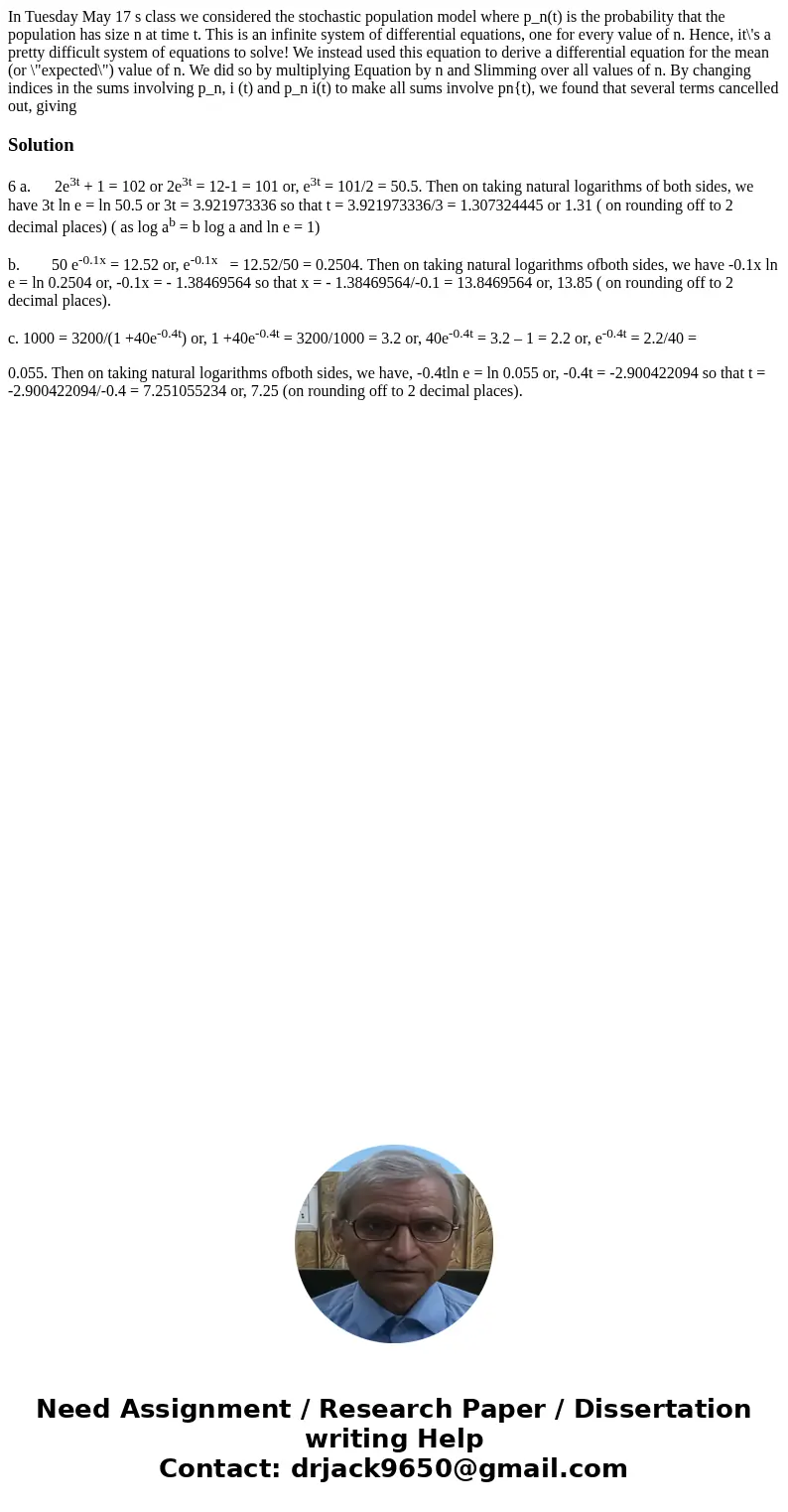In Tuesday May 17 s class we considered the stochastic popul
Solution
6 a. 2e3t + 1 = 102 or 2e3t = 12-1 = 101 or, e3t = 101/2 = 50.5. Then on taking natural logarithms of both sides, we have 3t ln e = ln 50.5 or 3t = 3.921973336 so that t = 3.921973336/3 = 1.307324445 or 1.31 ( on rounding off to 2 decimal places) ( as log ab = b log a and ln e = 1)
b. 50 e-0.1x = 12.52 or, e-0.1x = 12.52/50 = 0.2504. Then on taking natural logarithms ofboth sides, we have -0.1x ln e = ln 0.2504 or, -0.1x = - 1.38469564 so that x = - 1.38469564/-0.1 = 13.8469564 or, 13.85 ( on rounding off to 2 decimal places).
c. 1000 = 3200/(1 +40e-0.4t) or, 1 +40e-0.4t = 3200/1000 = 3.2 or, 40e-0.4t = 3.2 – 1 = 2.2 or, e-0.4t = 2.2/40 =
0.055. Then on taking natural logarithms ofboth sides, we have, -0.4tln e = ln 0.055 or, -0.4t = -2.900422094 so that t = -2.900422094/-0.4 = 7.251055234 or, 7.25 (on rounding off to 2 decimal places).

 Homework Sourse
Homework Sourse